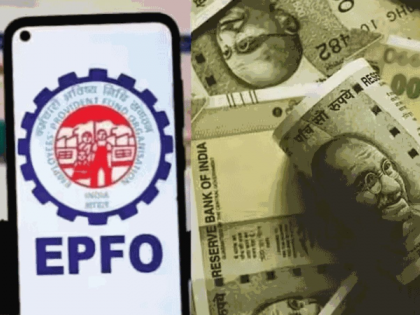Where Does Your PF Money Go? Here's How EPFO Manages Your Retirement Fund
By Lokmat English Desk | Updated: August 3, 2025 20:48 IST2025-08-03T20:46:57+5:302025-08-03T20:48:26+5:30
If you are employed in a private company and notice a fixed amount deducted from your salary each month ...

Where Does Your PF Money Go? Here's How EPFO Manages Your Retirement Fund
If you are employed in a private company and notice a fixed amount deducted from your salary each month as Provident Fund (PF), you're not alone in wondering where that money actually goes. The Employees’ Provident Fund Organisation (EPFO) does more than just collect this contribution—it plays a crucial role in investing it wisely. The purpose is to ensure that employees receive a substantial retirement fund and regular pension benefits after their service ends. This long-term planning offers financial security in the later stages of life, ensuring that employees don’t have to worry after retirement.
The PF contribution is made by both the employee and the employer, with each contributing 12% of the employee’s basic salary. The entire 12% from the employee is credited directly to the EPF account and earns annual interest. However, the employer’s 12% contribution is divided into multiple parts. Of this, 8.33% goes into the Employees’ Pension Scheme (EPS), and 3.67% is added to the employee’s EPF account. Additionally, a small portion is contributed towards the Employees’ Deposit Linked Insurance (EDLI) Scheme. This structured allocation ensures benefits beyond just savings, including pension and life insurance.
To understand it better, consider this example: If an employee earns a basic salary of ₹16,000 per month, then both the employee and the employer will contribute ₹1,920 each. However, only ₹587 from the employer's contribution reflects in the EPF account, as the remaining amount is redirected to EPS and EDLI. The idea behind this division is to build a solid pension base and offer life insurance cover. While this may seem complex at first, the design of the scheme ensures financial assistance to the employee and their family, especially in unforeseen circumstances.
EPFO doesn’t keep your money idle; it invests the funds in various secure instruments to generate returns. A significant portion goes into government securities and bonds, considered the safest form of investment. It also invests in corporate bonds issued by public and private companies, offering slightly better returns. Since the past few years, EPFO has allocated up to 15% of its corpus into Exchange Traded Funds (ETFs) linked to the stock market. This diversification ensures steady growth of your retirement corpus while balancing safety and returns in a long-term investment plan.
The benefits of the scheme extend well beyond retirement savings. If you have contributed to the PF scheme for at least 10 years, you are entitled to receive a monthly pension under EPS after turning 58. Additionally, if an employee passes away unexpectedly, the EDLI scheme ensures the family receives insurance benefits, funded entirely by the employer. In case an employee exits before completing 10 years of service, they can withdraw the EPS amount by submitting Form 10C. However, after 10 years, the EPS amount becomes locked for pension benefits. The scheme is designed to secure employees' future after their active work life.
Open in app